when talent meets skill
As a college freshman studying art, I had to first learn the theory of art before I was allowed to paint. I studied the rules of color and composition, learned to understand good design and spatial concepts. So much of what I learned was about control with little flexibility. Most of the students’ art had a similar look, which mimicked what was being shown in the galleries of New York. The students who excelled in class were those able to perform what was asked of them without difficulty. I wasn’t one of them.
As a young student aspiring to be an artist, I struggled with art history and all the academic subjects behind making art. I didn’t learn to appreciate any of it until later when I started to achieve on my own. I was told at the time that one percent of one percent of art students ever made it big. So why did so many of us still want to pursue art careers? It certainly wasn’t for the money.
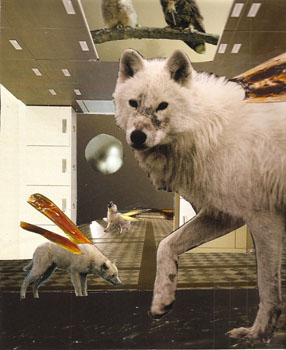 You don’t go into art thinking you’re not talented. Something has to drive the need to work long hours in isolation with little recognition. For me it’s not just the inherent need to make art, but the innate knowledge I have the talent to do it. I see now how my earlier training is actually the engine that allows my work to find its voice. It’s the skills I’ve learned and continue to learn that moves my work forward.
You don’t go into art thinking you’re not talented. Something has to drive the need to work long hours in isolation with little recognition. For me it’s not just the inherent need to make art, but the innate knowledge I have the talent to do it. I see now how my earlier training is actually the engine that allows my work to find its voice. It’s the skills I’ve learned and continue to learn that moves my work forward.
So the way I see it, it isn’t enough to just have a natural ability or aptitude to create, I also have to be vigilant about developing new skills. I need to remain curious about new ideas. It’s the combination of talent and skill that distinguishes my work from what’s already out there.
art in transition
I know well what it feels like when work plateaus. The fact is, I’ve just come through one of those periods. It’s unsettling to be at the end of something and have no idea what comes next. It’s even harder to find just what that next thing is. However, when the work holds no more surprises and has become predictable, change is the only way to infuse it with new excitement.
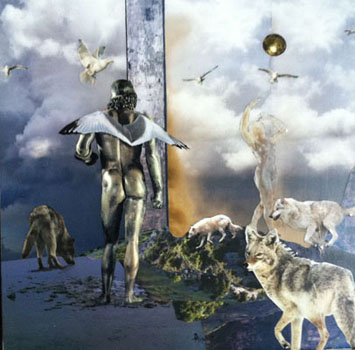 This begins a period of experimentation, which is a transitional stage that can be unnerving. It can also be a period filled with failure. Yet every time I go through this, I know in my gut there’s no other way to discovery except to work through the process. It’s important to keep showing up to the studio. It’s also a good time to go to the galleries and read art magazines. This is a time to make myself available to whatever is out there to inspire me.
This begins a period of experimentation, which is a transitional stage that can be unnerving. It can also be a period filled with failure. Yet every time I go through this, I know in my gut there’s no other way to discovery except to work through the process. It’s important to keep showing up to the studio. It’s also a good time to go to the galleries and read art magazines. This is a time to make myself available to whatever is out there to inspire me.
This is why I love collaging so much. At a time when my painting has plateaued, working new collages allows the intuitive side of my brain to take over. There’s a letting go that happens when I allow myself to play in another medium. It has a freeing effect from the intensity of painting. I’ll eventually edit out the collages that don’t work for me from those that I’ll want to paint.
So when my work plateaus, instead of looking at it as the end of something, I look at it as the beginning of a growth period. Making art involves solving problems. The bigger the problem to solve, the greater scope it gives the art. To be good at anything takes endless hours of work and the willingness to risk change.
is it really a failure?
While I went to college to study art, I feel on some level I’m self-taught. Since much of my work is about exploration and experimentation, it’s hard to imagine my art developing without it. As I remember back on those days in class, I was not a student who was able to achieve incredible work from my assignments. It’s not that I wasn’t hard working, I just wasn’t able to create on demand. I felt at the time I needed to feel something for the assignment in order to succeed at it. I see now how my thinking had inhibited my creativity.
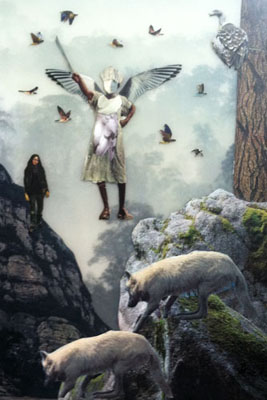 Fear of not succeeding or not being good enough, no doubt, was at the bottom of my inability to tackle a challenge out of my comfort zone. This is not just a student problem, but a lifelong difficulty that often holds mature and experienced artists back. I see this in artists whose work I respect, yet their work hasn’t changed in years. I was one of them.
Fear of not succeeding or not being good enough, no doubt, was at the bottom of my inability to tackle a challenge out of my comfort zone. This is not just a student problem, but a lifelong difficulty that often holds mature and experienced artists back. I see this in artists whose work I respect, yet their work hasn’t changed in years. I was one of them.
It’s taken me all these years to see how working smart is not the smartest way to work. This sounds crazy, right? When a painting or collage has failed that’s when I’m most able to try anything in an effort to correct it.
My conclusion, therefore, is to work with a kind of recklessness and loose regard for rules. I’m most likely to have a breakthrough when I attack a project without thinking. It’s important to keep reminding myself how a failure is really an opportunity for discovery.
the best time of day to create
I recently read an article about the time of day people are most creative. This was intriguing to me since it wasn’t at all what I had expected. I’m a night person who for years painted late into the evening. I always thought these hours were my optimal time for best results. It caught me off guard when I read the early afternoon hours were the best time for me to be in the studio. The opposite is true for morning people…their most creative time is in the evening.
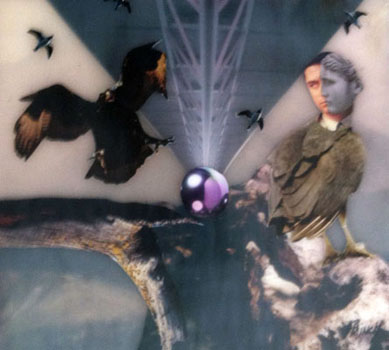 It seems we are most able to produce original ideas when our minds are more open and unfocused. We’re less likely to let inhibiting thoughts stop us when our minds tend to wander more and have less resistance. I find this information useful knowing my own work schedule has me up all night.
It seems we are most able to produce original ideas when our minds are more open and unfocused. We’re less likely to let inhibiting thoughts stop us when our minds tend to wander more and have less resistance. I find this information useful knowing my own work schedule has me up all night.
One of my biggest complaints is how slowly I work. Now I understand why. I see how painting late at night has actually inhibited me. In the late hours my brain tends to be more alert and analytical, which I realize has me more likely to overwork or overthink what I’ve painted.
So as an experiment, I decided to work in the earlier part of the day. The first thing I noticed was how much brighter my colors were when I painted in natural daylight. I also found my work went faster. I still work in two hour intervals, but changing my work schedule did indeed increased my production. I only go into my studio at night to evaluate what I painted earlier.
As it turns out, I’m able to get more work done when I’m not overthinking my process. I’m actually enjoying the painting more and find my work is fresher and less labored because of it.
art obsession
I recently went to the Chelsea galleries and was surprised by how many new galleries have opened this year. The construction of yet more art spaces is going on throughout the area. The art scene seems to be exploding here in New York with the most famous galleries opening large expensive spaces. With the world’s artists right here at my doorstep, I can’t help but get excited.
So having said this, how does an artist stand out from the crowd? With so much work to look at, what does an artist’s work need to distinguish itself from the pack? For me, it’s easy. I want to see work that has an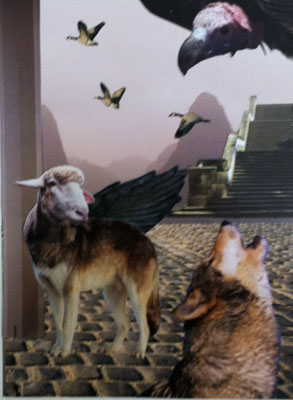 obsessive quality about it. This means the work should have an unconscious compulsiveness, a preoccupation with a persistent idea that takes it beyond the ordinary into something more personal and unique.
obsessive quality about it. This means the work should have an unconscious compulsiveness, a preoccupation with a persistent idea that takes it beyond the ordinary into something more personal and unique.
I recently read an article by Eric Meisel Ph.D, in Professional Artist Magazine, about how turning an interest into an obsession creates passion and is an important key to self-motivation. In other words, obsessing over an idea gives it energy and power. This was certainly true in the work I recently saw in a gallery of ink drawings, however, on closer glance I realized these were delicate works done with human hair. What appeared to be a simple rendering turned out to be this incredibly obsessive work, which I still haven’t been able to get out of my mind. The same goes for the thin threads of color glued with immaculate precision to create large landscape paintings on canvas.
It’s the persistence of the human spirit that surprises me most. For me, this is what distinguishes one artist’s work from another and why I search the galleries for new artists whose art has a contagious effect on me and my work.
intuitive intelligence and creativity
Just what exactly is an intuitive intelligence and how does it work? The interesting thing I found when researching this subject is how 80% of our minds are dedicated to unconscious thinking, which incidentally, is where creative thinking forms. This is different from book-learned intelligence, which knows only what it knows. When you think about it, this is huge. If so much of the mind is engaged in unconscious thought, then how do I access it to enhance my creativity.
One way to access the unconscious is through play, which makes a lot of sense when you think about it. It’s in 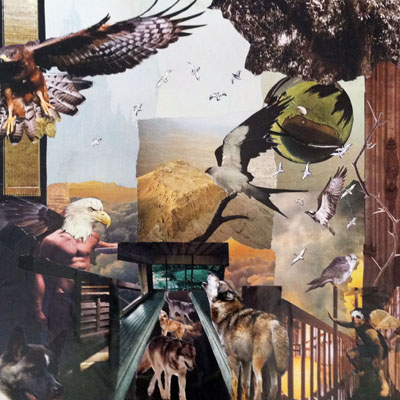 the letting go and having fun where ideas have a way of coming through. The trick is not to allow the analytic part of the mind to limit creative thinking. I can only comment on my own experience when a painting has failed. Instead of destroying it on the spot, I have a rule of letting it sit for a while, then go back into it with a sense of fun. I can’t ruin it anymore since I’ve already done that. This allows me to take risks I wouldn’t normally take. I’m going to play with it now without expectation. If I’m going to have a breakthrough, it’s going to happen when I’m not trying so hard.
the letting go and having fun where ideas have a way of coming through. The trick is not to allow the analytic part of the mind to limit creative thinking. I can only comment on my own experience when a painting has failed. Instead of destroying it on the spot, I have a rule of letting it sit for a while, then go back into it with a sense of fun. I can’t ruin it anymore since I’ve already done that. This allows me to take risks I wouldn’t normally take. I’m going to play with it now without expectation. If I’m going to have a breakthrough, it’s going to happen when I’m not trying so hard.
If I push myself beyond my own limitations with an inspired energy, I’m more likely to have a creative breakthrough. To be intuitive means I have an enhanced ability to notice things. It means I have a way of making sense of a world that doesn’t always make sense. Survival itself depends on it. So while the analytical side of my brain wants to stop me from producing something it’s not sure I can accomplish, it’s the intuitive side of me that will take the risk and discover a creative way to solve the problem.
So my conclusion is to be observant when taking in information and try to be in touch with my feelings. I know when something is right when I get this tickle in my gut…we all get it. The trick is to recognize what you have, then act on it.
psychology of cliques
This subject is close to my heart since so much of life is dictated by who’s in and who’s out. By definition a clique is the coming together of several people with like interests interacting exclusively with one another to the exclusion of others. So why should this interest me if artists are supposed to be loners?
I learned early in life it’s easier to belong than not. When I first became an artist I joined a local art group. In the beginning I found this group helpful. Through them I found the best prices for art supplies and where to find the fastest place to get a painting framed. They were even helpful in finding a local gallery. I was part of an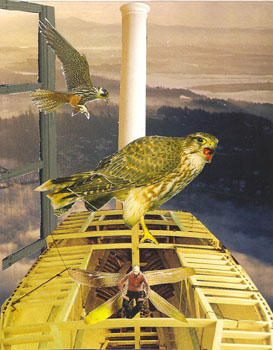 art community with all its openings and get-togethers. The problem for me was how this clique mentality held me to a kind of group standard that was intolerant of individuality.
art community with all its openings and get-togethers. The problem for me was how this clique mentality held me to a kind of group standard that was intolerant of individuality.
I know from experience, great art does not come from this kind of thinking. When I find myself trying too hard to fit in, it shows in my work. I see this as a problem for all of the arts. While ideas become contagious, they can also bring a kind of sameness to a group who limits themselves to similar opinions. The way I see it, the minute an idea catches on it’s time to move on from it.
In my own critiquing group, I find it essential to keep bringing in new artists. This brings a heightened energy to what might become stale or repetitive. It also brings in people with new eyes and different experiences. So I say, keep your mind open, become the best at what you do and keep working.
become your best artist
My ten-year-old granddaughter, an aspiring soccer star, told me recently, “If you want people to like you, you have to get good at what you do.” Oddly enough, this simple comment resonated with me. I couldn’t get it out of my head, repeating it to those who would listen. Instead of focusing on what’s going on in the art world, I pretty much needed to concentrate on my own development. I needed to find a new level of excitement to inject into my work to give it that extra something that makes it totally mine.
As a young artist I had full intentions of making a living from my work. I did everything I could to come to the 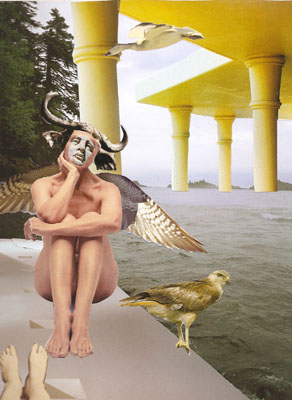 attention of the public by exhibiting in outdoor art shows, mall exhibits and national juried exhibitions. Since selling art was my ultimate goal, my work lost much of its originality. You might say, I played it safe producing what I knew would appeal to the buyers. I realize now, no aspiring artist should ever put themselves into a mold if they want to stay original.
attention of the public by exhibiting in outdoor art shows, mall exhibits and national juried exhibitions. Since selling art was my ultimate goal, my work lost much of its originality. You might say, I played it safe producing what I knew would appeal to the buyers. I realize now, no aspiring artist should ever put themselves into a mold if they want to stay original.
With age comes different priorities. I have fewer distractions now with a new fearlessness about taking risks. I know the rules, but I’m not ruled by them. This was actually the hardest part for me. It means giving myself the permission to fail, if that’s what it takes to have a breakthrough.
So when I think of my granddaughter’s comment about becoming the best at what I do, I won’t fool myself in thinking this will be easy. It requires a fearlessness, an ability to take risks at the cost of sometimes not getting it right. And most of all, I need to continue pushing past my comfort zone and allow myself to expand my vision.
not just a series
I find when an artist has worked at his or her craft for a minimum of six years there’s a sophistication that newer artists haven’t developed yet. To become an artist is a process, a slow step-by-step developing of skills. There are no shortcuts. It’s the ability to learn what works and what doesn’t. The simple truth is, an artist has to put in the time.
For me, good skills are important, but having a point of view, a distinguishable voice carried through the whole body of work is what determines one artist from another. It’s in the power of seeing the world with a new twist that gives art its energy, its uniqueness. When I walk into a gallery I want to see work from an artist that has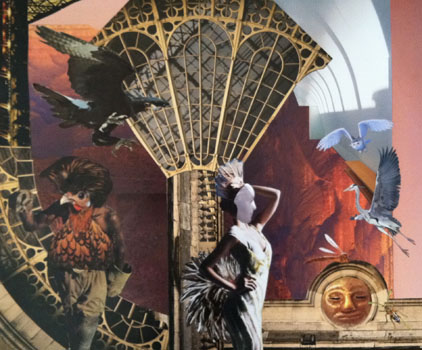 a consistent theme. I want to see what intrigued the artist to this subject. Like a novel, I want the work to tell me a story. I want the work to take me along with its obsessive need to tell me something I didn’t know.
a consistent theme. I want to see what intrigued the artist to this subject. Like a novel, I want the work to tell me a story. I want the work to take me along with its obsessive need to tell me something I didn’t know.
The truth is, I don’t want to see the same idea repeated in a series that doesn’t take me anywhere except to rehash a tired idea. I think this is why I stopped painting cityscapes ten years ago. I became bored with the sameness of an idea that didn’t evolve into anything more insightful. Again, it’s like a novel where I don’t feel connected to the main character and have no interest in the outcome of the story.
I realize the word “series” implies there’s a beginning and end to an idea. A better concept would be a “serial” of work, which is a continuous body of work. I used to watch the soap operas on TV because of their ongoing storylines that captured my interest and took me along with all the plot changes. As an artist, I also want the people who follow my work to be part of my exploration. So when I say a series of work, I’m talking about a theme that grows beyond the original idea and still has the power to intrigue its audience.
trends in art
When I first graduated from college many years ago, realism was still influenced by the Impressionists. It was starting to change when photorealism began getting press. I remember going to the Whitney Biennial and seeing the most incredible paintings. While it was still mostly abstract at the time, there were a few emerging narrative realists shown.
At that time painting from photographs were frowned upon. It seems, while the Impressionists broke the rules of the classical painters, they produced more rules of their own for a new generation of artists to follow. It was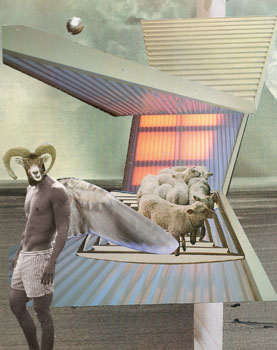 all about light and nature with soft painterly edges, and of course, photographs were out. That made you an illustrator. I avoided questions about how I rendered my imagery. Although it felt dishonest, I didn’t know anyone at the time who admitted to using photographs.
all about light and nature with soft painterly edges, and of course, photographs were out. That made you an illustrator. I avoided questions about how I rendered my imagery. Although it felt dishonest, I didn’t know anyone at the time who admitted to using photographs.
Fortunately we’re now in a new age of technology where anything goes. We have truly entered the age of science fiction where the impossible is being explored. If you can imagine it, you can make it happen. Everything is changing as technology advances. This new thinking is an energizing force for the arts, as I see it, whether it’s video, laser, polaroid, installation, digital, kinetic or just plain good drawing and painting.
I find this an interesting development as an artist. It gives me permission to look inside myself and take risks without restrictions. It allows me to explore unorthodox materials and methods in search of a new way to make art…and that advances everyone.
So while I move forward, I also look back and take what I need from old trends. My conclusion is, if the work is fresh and has an original voice, it will find its place.
the art of focusing
As a creative person I never questioned why I was so easily distracted. I never thought twice how time was able to get away from me. I just knew I had to focus harder in order to block out all the noise and distractions around me. I look back on the hours put into my paintings and still can’t believe the intense effort it took. The only way I got through it was to listen to books on tape to keep my mind from wandering. I put in long hours, 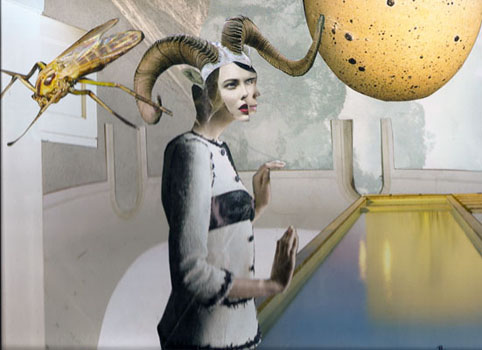 sometimes ten hours a day. Try working six days a week—sometimes seven—at this pace. It wore me out. My mind was dulled to the point where I couldn’t carry on an intelligent conversation. I was often irritable as well.
sometimes ten hours a day. Try working six days a week—sometimes seven—at this pace. It wore me out. My mind was dulled to the point where I couldn’t carry on an intelligent conversation. I was often irritable as well.
When I was told I had ADD, it explained so much. While I was accused of being disorganized, I knew I had a sense of order, just not like everyone else’s. It was up to me to figure out a way to stop exhausting myself and maximize my energy better.
I now approach my work with intelligence. I’ve learned my brain has maybe two hours of real concentration at one sitting and to push past that won’t give me better production. My work habits have changed because of this realization. Instead of hours of painting, I go into my studio ready to put in one to two hours at most. I quit working the minute I hear that voice in my head telling me to stop. This is important. If I don’t listen I can be sucked in again working long into the night, and most likely, overwork the painting.
Sometimes it’s best to leave the studio even when I have a little more energy to paint. When the work goes well, I’m excited the next day to get back to it. Somehow, the painting moves faster when it feels effortless.
work to the idea
I had a student once tell me she didn’t consider herself a real artist because she found it too difficult to come up with ideas to paint. She thought herself a technician, an illustrator with good skills, but not someone able to come up with an original idea every time. She eventually stopped painting.
This is something I’ve heard other artists articulate and it got me thinking about what I want from my own art. First off, I want the work to have impact, to have an immediate eye appeal that draws the viewer in. I want it to have an original approach that distinguishes my point of view from all other work. So how does this happen with consistency over a long career?
One thing I’ve learned, working to an idea has an inhibiting effect. I find preset concepts tend to make the art rigid and predictable. A series of work based on one idea repeats itself and has a contrived feel to it. Working to an idea is not the same as letting the idea happen. This is something I try to remember as I push to develop new concepts. When I find myself falling into a pattern, it’s time to change directions. By sticking to one way of thinking, I’m more likely to create a set of rules which becomes an obstacle where nothing new can evolve.
an idea is not the same as letting the idea happen. This is something I try to remember as I push to develop new concepts. When I find myself falling into a pattern, it’s time to change directions. By sticking to one way of thinking, I’m more likely to create a set of rules which becomes an obstacle where nothing new can evolve.
So, in order to allow an idea to find its true potential, it’s up to me not to censor its possibilities away. Good art holds the wonder of discovery with the power to absorb the viewer into its soul.
competition and its effects
It seems we live in a competitive world that pretty much dictates over much of our lives. So my question is, does a competitive environment advance art? Does the best art come from the most competitive artists? This is an issue that greatly disturbs me because it carries with it a degree of elitism. If I can’t compete at a high level, then my work can’t possibly be good.
I’m conflicted over this since there are many reasons for an artist to compete and not all of them bad. First off,  every time I go to the galleries I compare my own work to what’s hanging on the walls. I’m my harshest critic, after all. I compete with myself every time I push past what I have previously accomplished. This is good competition, as I see it. It’s the only way my work advances.
every time I go to the galleries I compare my own work to what’s hanging on the walls. I’m my harshest critic, after all. I compete with myself every time I push past what I have previously accomplished. This is good competition, as I see it. It’s the only way my work advances.
With artists competing to get into juried exhibitions and galleries, it’s just not possible for all to succeed every time. A friend of mine recently entered a juried show where five hundred artists applied, yet only twenty-four artists were accepted. Does this mean all rejected work was inferior? I hardly think so. Still, entering these shows is a good way to advance a career. These exhibits give an artist exposure, and most of all, build resumes…which galleries and buyers require.
I admit I’m a competitive person on some level, but I also recognize it’s no fun winning if you have no one to share it with. It’s inside a community of artists that techniques should be shared and ideas brainstormed. It’s the only way I see to make sense of the ups and downs of an artist’s life. The support of other artists helps create an environment that makes everyone’s art better.
So my conclusion about competition in the arts is still undecided. Since competing in juried exhibitions is a way to get your work seen in museum or gallery settings, it’s a necessary evil we artists have to contend with. The trick is not to take the juried shows too seriously and to not let anything or anyone interfere with the excitement of creating the work itself.
when nothing goes right
The longer I work at my art, the more the creative process puzzles me. I don’t always know where inspiration comes from, yet I do know there are times when it comes easily to me and other times when I struggle with the simplest skills. There’s no predicting when I start a new work how it will go until I’m into it. While I never anticipate problems, I have learned over the years to expect them.
I can work hours on an area of a painting to the point of obsession, only to find the next day nothing I did worked. But one thing for sure, never destroy a work before going to bed. Often tired judgment is the easiest  way to make mistakes. While some paintings are easier to paint than others, I’ve come to respect the process. This is where having passion for the work separates amateurs from professionals. Still after all these years, why do I have to struggle at all with any painting? You would think I should have figured out a way to avoid these problems by now.
way to make mistakes. While some paintings are easier to paint than others, I’ve come to respect the process. This is where having passion for the work separates amateurs from professionals. Still after all these years, why do I have to struggle at all with any painting? You would think I should have figured out a way to avoid these problems by now.
I have a theory about this. I feel the difficult paintings are necessary in the development of my art. It’s the persistence to conquer a problem piece that often leads to new insights. It’s in the breakthroughs that art is advanced. When I teach a drawing class, I set up problems for the students to solve from the very beginning. It’s the ability to conquer frustration that determines whether they have a stomach to become an artist.
I’ve come to the conclusion, when nothing goes right on a painting it’s just part of the process. It should be considered an opportunity to explore. To be a professional artist means being tenacious and open to unexpected possibilities.
why do we create?
For some of us it was never a choice whether we went into a creative field or not. I knew in kindergarten I was destined to be an artist. I knew at six years of age, after visiting a friend’s home whose father was a painter. It was the smell of turpentine and oil paint that did it for me. Was this a calling or something else triggered off in my brain? I know it’s not something I can help. While many people take up art as a hobby, it’s the artist who lives and dies by its passion.
Artists are a complicated bunch, that’s no surprise. Who else has the arrogance to try and reinvent beauty,  reinterpreting the way we look at ourselves through all its gut wrenching truths. Art is a luxury of our society. It is not an essential part of day to day survival like food or water. However, without the artist there would be no beauty, no style, no invention, no insight into life itself.
reinterpreting the way we look at ourselves through all its gut wrenching truths. Art is a luxury of our society. It is not an essential part of day to day survival like food or water. However, without the artist there would be no beauty, no style, no invention, no insight into life itself.
I realize my brain functions in a certain way and I can’t help the way I’m wired, which leads me to the study done by Roger W. Sperry, a 1981 Nobel Prize winner who discovered how the brain thinks in two very different ways. The brain has two hemispheres, the right lobe and the left lobe with each side processing situations very differently. The right brain is the visual and intuitive side. It is able to see the whole picture instead of just details. The left side of the brain, however, is more analytical, more detailed oriented and comes to more logical conclusions. This explains everything.
I see now why I became a realist painter. I’m without a doubt a right brain thinker. While I love abstract art, I find it difficult to do. There’s a sense of completion I can’t see in advance and this hinders my creative process. It now makes perfect sense.
So my conclusion about creativity is simple: it starts in the right side of the brain, but it’s our own individual experiences that develops it to its fullest.
finding original ideas
I used to say, “I can teach skills, but I can’t teach talent.” I’ve changed my mind on this, however, since I believe talent is about developing original ideas, which we all have on some level. The trick is to recognize these thoughts and act on them. This happens for me when I work with collage. By using a system, I’m able to explore new ways to mine ideas from my subconscious. It absolutely surprises me every time I produce a new batch of images. It’s exciting to sit down having no clue where I’m heading and come up with something so bizarre I can hardly recognize myself in it.
Nothing motivates me more then a new way of looking at the world. These collage images do this for me. They use a different thought process than my painting, yet one feeds the other. Collaging is a subconscious free flow, while painting is more of an eye-hand coordination skill. They complement each other.
use a different thought process than my painting, yet one feeds the other. Collaging is a subconscious free flow, while painting is more of an eye-hand coordination skill. They complement each other.
Best of all, I have this untapped well of ideas sitting in my head. This is exciting, since there is no artist’s block to contend with. When I get bored with what I’m painting, I go back to working on new collages. Each time I sit down to work there are different color variations and structural changes that seem to pop up out of nowhere. There’s no such thing as failure either. If a piece isn’t working, I just add new elements, move images around, create a new point of view.
So I’ve come to the conclusion, “talent” is in the ability to keep an open mind and seek out new ideas to expand on. The trick is to find what works for you.
content or skill
When I was asked what I look for in good art, it set me thinking. It’s true I get excited when I come across a new concept I haven’t seen before. The content of a piece is sometimes what draws me to it, even if the technique of the painting or drawing is just adequate. If the subject has meaning executed in an original voice, it will haunt me. This kind of art stays with me long after I’ve viewed it.
Having said this, I’m also attracted to work that is well executed, its technique and skill so advanced it becomes an art in itself. In this case, it doesn’t matter what the artist is painting. The skill carries the work. This past year I saw a show by Bill Richards at the Nancy Hoffman Gallery in Chelsea, NY and I still can’t get it out of my head. The subject of his intricate drawings were certainly familiar…the underbrush of a forest…but the way his drawings were rendered gave the word obsession a whole new meaning.
year I saw a show by Bill Richards at the Nancy Hoffman Gallery in Chelsea, NY and I still can’t get it out of my head. The subject of his intricate drawings were certainly familiar…the underbrush of a forest…but the way his drawings were rendered gave the word obsession a whole new meaning.
This brings me to another point. Art for me has to have something beyond an average attempt at making a statement. There has to be an element of accountability that makes me want to linger longer than just a quick glance. I want to feel something. I want the work to take me out of what I already know and make me look at the world in a new way. If the work has metaphor or irony I’m intrigued…add a little obsession and it becomes this whole other world that connects me to another way of thinking.
When an artist is able to bring me to the source of their inspiration, it enriches me. This gets me very excited. The artist has the ability to change the way I see my place in the world, one work of art at a time.
rejection and juried shows
It’s no secret that an artist’s life is a hard one. Yet every year art students graduate from good schools dreaming of becoming the next Picasso. What they don’t know is just how hard it will really get. The work is difficult and, more often than not, does not generate enough of a living to survive on. All my art friends work day jobs in order to pay the bills. It’s a given, you’ll work long hours for little financial compensation.
As if that’s not enough, add the emotional insult of being rejected from an exhibition because someone decided your work didn’t fit into the show. It doesn’t matter how skilled or advanced your work is, everyone has an  opinion on what good art should be. I’ve suffered many rejections in my career, but instead of getting me down, it energized me, made me more determined to make my mark. Each time one of my paintings didn’t get into a show, I made sure I saw that exhibit to determine why. Sometimes it was an abstract show and my photorealistic paintings really didn’t fit. Sometimes it was simple logistics…too many paintings submitted and not enough room to hang them all. Also, sometimes the work accepted was so advanced my paintings just didn’t meet the same standard. I learned from all of it.
opinion on what good art should be. I’ve suffered many rejections in my career, but instead of getting me down, it energized me, made me more determined to make my mark. Each time one of my paintings didn’t get into a show, I made sure I saw that exhibit to determine why. Sometimes it was an abstract show and my photorealistic paintings really didn’t fit. Sometimes it was simple logistics…too many paintings submitted and not enough room to hang them all. Also, sometimes the work accepted was so advanced my paintings just didn’t meet the same standard. I learned from all of it.
It was only after I had the opportunity to jury a major art exhibit did I realize how haphazard it really can be. First off, I was one of three jurors and we were asked to go through five hundred paintings over a two day period. Each painting submitted to the exhibition was numbered. We used a three point system. Number one meant “yes”, number two “no” and number three “maybe”. This is where it gets complicated. After the three jurors independently went through all the paintings, we sat in a room together and went over our lists one painting at a time. Often we couldn’t agree, and we each allowed paintings into the show we didn’t agree with, in order to get in pieces we wanted. In the end, the show was compromised and weak.
There was a lesson in all this. No one should ever have the power over my art except myself. Tastes and opinions change, but the artist is the one who must stay true to his or her convictions.
extraordinary luck
 While I consider myself a lucky person, it’s that extraordinary kind of luck that catapults a person onto another plane of recognition that intrigues me. I want to know why some people seem able to get on the fast track, while others just as talented can’t make it through the door. I’ve always felt you make your own luck, but the question is how do you go about it?
While I consider myself a lucky person, it’s that extraordinary kind of luck that catapults a person onto another plane of recognition that intrigues me. I want to know why some people seem able to get on the fast track, while others just as talented can’t make it through the door. I’ve always felt you make your own luck, but the question is how do you go about it?
One thing I know for sure, it doesn’t hurt to be prepared. This means remaining focused and committed. It means maintaining a passion for my work without limiting myself. When Oprah Winfrey was asked how she explains her extraordinary luck, she answered, it was all about doing the work in advance…to be prepared when ordinary luck crossed her path. I like that.
Lucky people surround themselves with positive thinkers. They leave themselves open to new ideas and are able to relax in the face of new experiences without censoring themselves. They learn from their mistakes and are not overly sensitive. They’re intuitive and not afraid to act. Many are risk takers. A friend of mine told me organization and the ability to act on coincidences was what worked for her. She seeks out new situations where she can meet new people. Just think, many careers have been launched through chance meetings.
I prefer to surround myself with people who are goal oriented and optimistic. What you project is what you get back. This is important to remember when I’m feeling disillusioned. If I think nothing will happen, nothing will happen.
So my resolution for the new year is to keep moving forward and open myself up to new experiences no matter how much it scares me. Luck comes with the reaching for goals that keep changing as you grow.
happy holiday
 I want to reflect back on the past year and thank all those people who have encouraged and commented on my blogs. I have learned a lot about myself through them. To clarify my thoughts in black and white has helped my process to create. It has energized my work and has given me a forum to show my art. Thank you Facebook.
I want to reflect back on the past year and thank all those people who have encouraged and commented on my blogs. I have learned a lot about myself through them. To clarify my thoughts in black and white has helped my process to create. It has energized my work and has given me a forum to show my art. Thank you Facebook.
One thing I’ve learned is how important a community of artists can motivate an artist. We are no longer alone. I have made friends with artists across the globe, and I’m grateful to all of them for their input into my work.
So I want to wish all of you a Happy Holiday. Good things are ahead and I plan to continue blogging and continue this journey of discovery into the new year.
I’ll be back in January.
Wells Blog
Duis mollis, est non commodo luctus, nisi erat porttitor ligula, eget lacinia odio sem nec elit. Maecenas faucibus mollis interdum. Nulla vitae elit libero, a pharetra augue.